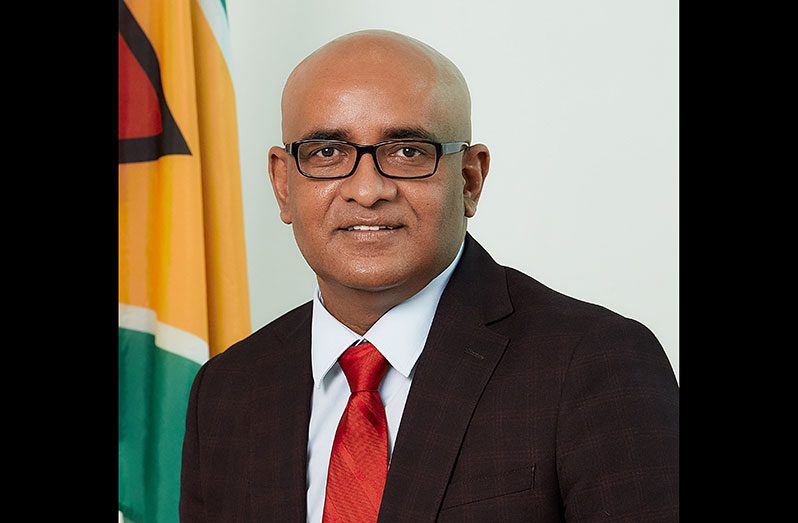POWER outages, or ‘blackouts’ as they are commonly called by Guyanese, have somewhat become a staple throughout the country, owing to some challenges long explained by the Guyana Government and the national electricity company, the Guyana Power & Light Inc. (GPL).
The Guyana Government, however, envisions that through diversifying the country’s energy supply, a more stable electricity system could meet Guyanese in the not-too-distant future.
Vice-President Dr. Bharrat Jagdeo on Monday outlined renewable energy measures which are part of the government’s broader effort of reducing carbon emissions from electricity generation.
“The first big decarbonising option would be gas,” VP Jagdeo said during his press conference at the Arthur Chung Conference Centre at Liliendaal. “Gas is not totally renewable, but the introduction of renewable energy is not keeping pace with the growth of energy demand,” the VP said.
“Gas reduces the [carbon] emission by 50 per cent,” he added, noting that Guyana currently utilises fuel for energy with a significantly higher output of carbon emissions.
On Monday, Cabinet granted its ‘no objection’ for the Office of the Prime Minister to engage China Railway Group Limited to construct the Amaila Falls Hydropower Project (AFHP), based on a Build-Own-Operate-Transfer (BOOT) model.
Under this model, the company will supply electricity to GPL at a cost not exceeding US$0.07737 per kWh.
Vice-President Jagdeo lamented the stagnation of the Amaila Falls Project under the previous A Partnership for National Unity + Alliance For Change (APNU+AFC) Government, which had fiercely criticised the project while in Parliamentary Opposition before 2015.
Despite the criticism by the APNU+AFC, the AFHP remained a bankable project. “When APNU got into office, they asked Norway to do another study. Norway said they did this study, and Amaila Falls is still the best option for meeting baseload renewable energy for Guyana,” VP Jagdeo pointed out.
The Guyana Chronicle reported previously that in 2014, Norway, under its climate partnership with Guyana, transferred some US$80M to the Inter-American Development Bank (IDB) to fund the project.
Some of the money in question, which was initially set aside to fund the AFHP, could, however, be repurposed to support other renewable energy projects, the Vice-President noted on Monday.
“The US$80-odd million that we had parked at the IDB was money that should have been invested,” Dr. Jagdeo expressed, noting instead that this money, which was part of a broader US$100million financing, “is going to be used for large solar farms”. These solar farms will be implemented before 2024, he added.
Commenting on Guyana’s current power generation capacity, Dr. Jagdeo said, “We have a problem now with the grid; we are doing the study, so that by next year, we can have an overall improvement of the grid, so that when all of this power comes in from Amaila, it’s stable; we don’t have all these blackouts.”
The Guyana Government will also explore the inclusion of ‘smart’ grid technology which, the Vice-President said, can help reduce transmission and commercial losses, and ultimately lessen the carbon footprint.
“Fibre will be in all the electricity lines, that you can sit in a control room and know, without having to send a crew out and get a report, when there is a power outage [in] any part of this country,” Vice-President Jagdeo said.




.png)









